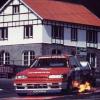Announcements
-
Latest Posts
-
Never cheap out on brakes, tyres, suspension. I learnt the hard way at Oran Park lol
-
By TurboTapin · Posted
You got your answer when everything was OK after disconnecting your return line from the FPR. Why in the world are you running a 460, 2200CC injectors, etc. on stock 8mm lines? Keep the pump, ditch the lines. I used both 8mm lines as my feed and one of my Hicas 10mm lines as return. -
Also to note, in the Subaru world, Whiteline endlinks have been reported to break... often. So going Hardrace or GKTech would be my option.
-
Hi all. I had to chamge fuel pump due to car sitting for 10.years and went the 460. From memory it had the slightly smaller walbro in it previously. Running bosch 2200 injectors and a turbosmart compact fpr. Problem is no2 I can't get base pressure below 70psi. If I disconnect return line from fpr pressure drops indication restriction. I've inspected.the fuel line and removed the pipe on return line in tank and no chamge. Surely I'm not the only o e using stockings on a 460? Could the fpr be too small to handle the flow of new pump ? I'd like to sort it rather than going back.to smaller pump.
-





Recommended Posts
Create an account or sign in to comment
You need to be a member in order to leave a comment
Create an account
Sign up for a new account in our community. It's easy!
Register a new accountSign in
Already have an account? Sign in here.
Sign In Now